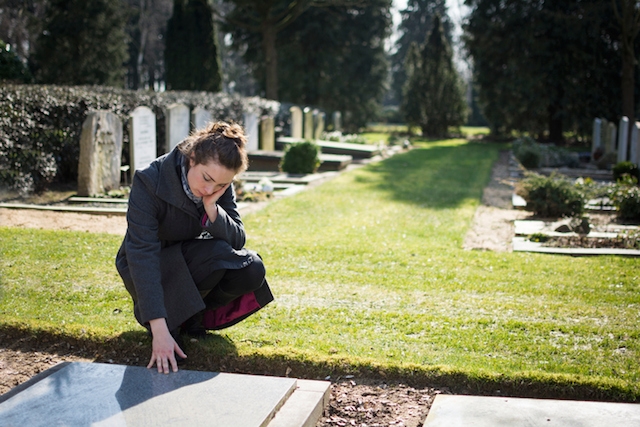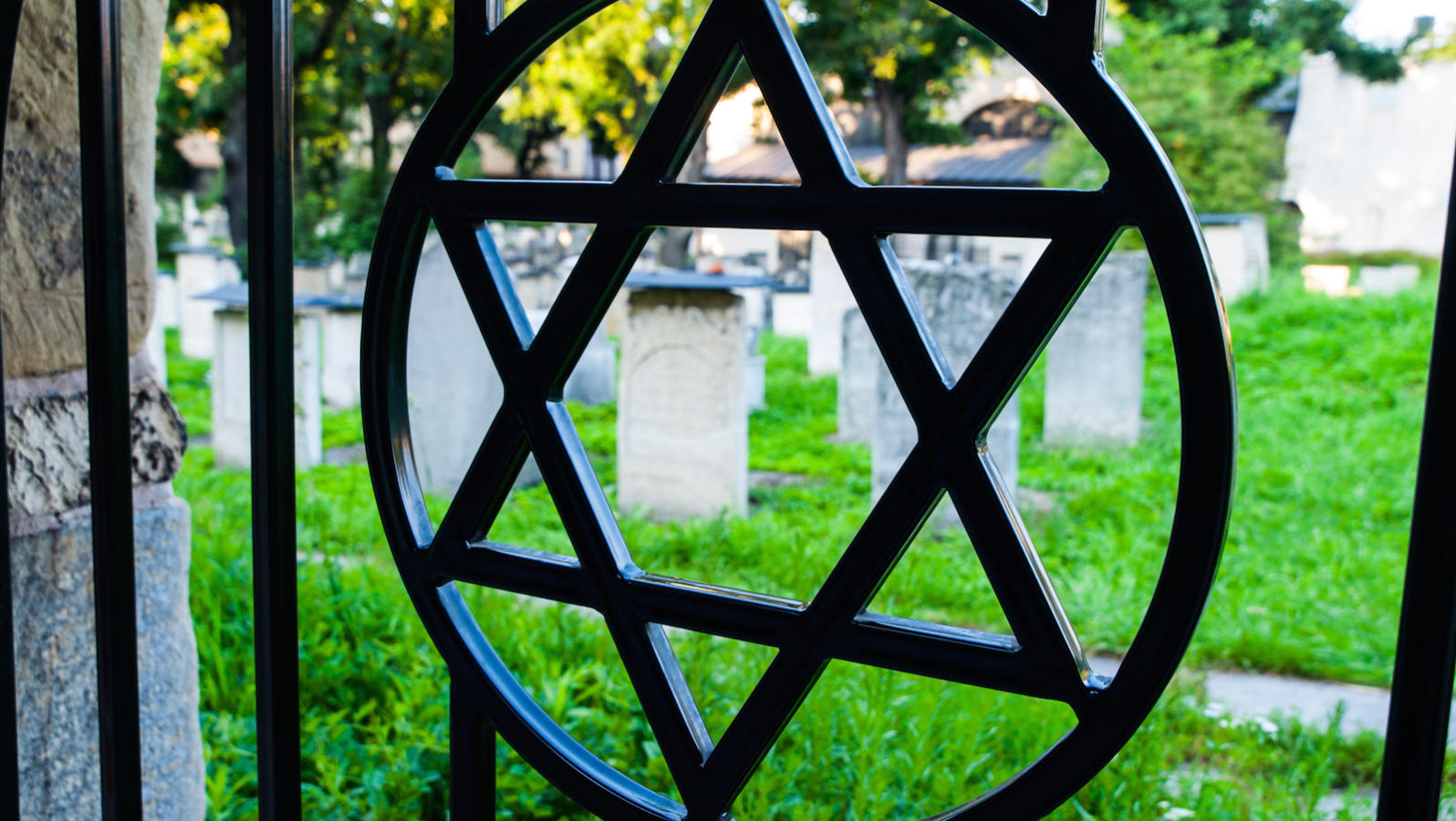Jewish tradition defines several stages in the process of mourning, which correspond quite well to the modern understanding of the emotional process of grief.
Aninut, From Death Until Burial
The period from the moment of death until the burial is called aninut, and a mourner in this stage is called an onen. The onen has no religious obligations except to attend to the practical necessities of arranging for the funeral. The Jewish understanding is that an onen cannot focus on anything other than the immediate issue of the burial, and should not be expected to be capable of any ritual observances, even those that might otherwise be performed on a daily basis (such as reciting the Shema).
The Funeral
Traditionally, Jewish funerals take place as soon after death as possible, often within 24 hours. The funeral service generally happens at a synagogue, funeral home or in the cemetery, either at a cemetery chapel or beside the grave. The service typically includes some readings from Jewish texts, a eulogy and the El Maleh Rahamim (God Full of Compassion) prayer.
Returning from the Cemetery
Immediately on returning from the cemetery, mourners should be greeted with a “meal of consolation” prepared by their extended family and/or community. It is traditional to place a pitcher of water, a bowl and towels outside the door of the house for the ritual hand washing.
With your help, My Jewish Learning can provide endless opportunities for learning, connection and discovery.
Shiva
Jewish tradition offers very specific recommendations for gradual re-entry into normal life. The first week after the funeral is known as shiva (literally, “seven”). During this period, the mourners are treated with the utmost care and respect. Their needs are met by the community — both their physical needs, such as meals, and their spiritual and emotional needs. During this time, mourners mostly remain at home and a service is held daily (often in the evening) at the home, so that the mourners may recite the Kaddish. Mourners are encouraged to join the congregation on Shabbat to say Kaddish. In some communities services are held in the home both morning and evening. The tradition is that the Mourner’s Kaddish is said in the presence of a minyan, to insure that mourners do not grieve in isolation but rather surrounded by members of their community.
Friends, relatives, and community members visit and bring some food for the household. The shiva period gives the mourners a time to withdraw from the business of the world and begin to integrate and accept their loss. At the close of shiva, friends or family traditionally accompany the mourner for a brief walk (e.g., around the block) to symbolize the start of re-entry into the world.
Sheloshim

The next stage of the mourning process is known as sheloshim (literally, thirty). This 30-day period is counted from the day of the funeral (and so includes the period of shiva). Following shiva, the mourner returns to work during sheloshim but is still not completely back in the world. This ongoing mourning is expressed by avoiding parties, concerts, and other forms of public entertainment.
At the conclusion of sheloshim, the formal mourning period ends, except for those who are mourning parents. For these mourners, formal mourning, including the recitation of the Mourner’s Kaddish, lasts eleven months (see Shnat ha-evel below). Some people may wish to mark the end of sheloshim with a special minyan (prayer service) at which the mourner or family members speak about the deceased. Also, if there is to be a public memorial service, it is usually held at the conclusion of sheloshim. The memorial service may include several speakers and music or poetry that might not have been included in the funeral service.
Shnat Ha-Evel, the First Year of Mourning
Traditionally, mourners who have lost a parent say the Mourner’s Kaddish daily for eleven months (or a full year), whereas mourning for all other relatives ends with the sheloshim. In modern practice, mourners may recite the Mourner’s Kaddish for 11 months for other immediate relatives as well. This is a time we are encouraged to get back into life fully, while honoring our dead on a daily basis through the saying of the Mourner’s Kaddish.
Unveiling
There is a traditional obligation to create some form of matzevah (“monument,” usually a gravestone) to mark the site of the grave. The “unveiling” is a formal ceremony following the placement of the tombstone.
Customs differ, but the unveiling is generally held after sheloshim and usually in the month before the first yahrzeit (anniversary of the death; see below). The unveiling service is a relatively recent practice originating in the United States. Technically, a rabbi need not be present, but it is helpful to have an experienced person officiate.
The ceremony is very brief and usually includes some psalms and readings, a few words about the deceased, the removal of a covering from the monument, the El Malei Rachamim prayer, and, if a minyan (quorum of 10 adult Jews) is present, the Mourner’s Kaddish. You may ask the rabbi to assist you in putting together an appropriate service to mark the occasion. The unveiling reminds us that we will continue to visit the grave on yahrzeits and during the High Holiday season, and that the memory of the person will always be with us as our life continues.
Yahrzeit
Yahrzeit is the yearly anniversary of a loved one’s death (traditionally observed on the Hebrew calendar). We observe yahrzeit at home by lighting a yahrzeit candle (which burns for 24 hours) in memory of the deceased. In the synagogue, we observe yahrzeit by saying the Mourner’s Kaddish at services.
Adapted with permission of Kavod v’Nichum a nonprofit educational organization that promotes and assists the formation of bereavement committees and chevrah kadisha (Jewish burial society) groups in synagogues and communities throughout North America.
Sign up for a Journey Through Grief & Mourning: Whether you have lost a loved one recently or just want to learn the basics of Jewish mourning rituals, this 8-part email series will guide you through everything you need to know and help you feel supported and comforted at a difficult time.
Looking for a way to say Mourner’s Kaddish in a minyan? My Jewish Learning’s daily online minyan gives mourners and others an opportunity to say Kaddish in community and learn from leading rabbis.
Kaddish
Pronounced: KAH-dish, Origin: Hebrew, usually referring to the Mourner's Kaddish, the Jewish prayer recited in memory of the dead.
minyan
Pronounced: MIN-yun, meen-YAHN, Origin: Hebrew, quorum of 10 adult Jews (traditionally Jewish men) necessary for reciting many prayers.
Shabbat
Pronounced: shuh-BAHT or shah-BAHT, Origin: Hebrew, the Sabbath, from sundown Friday to sundown Saturday.



